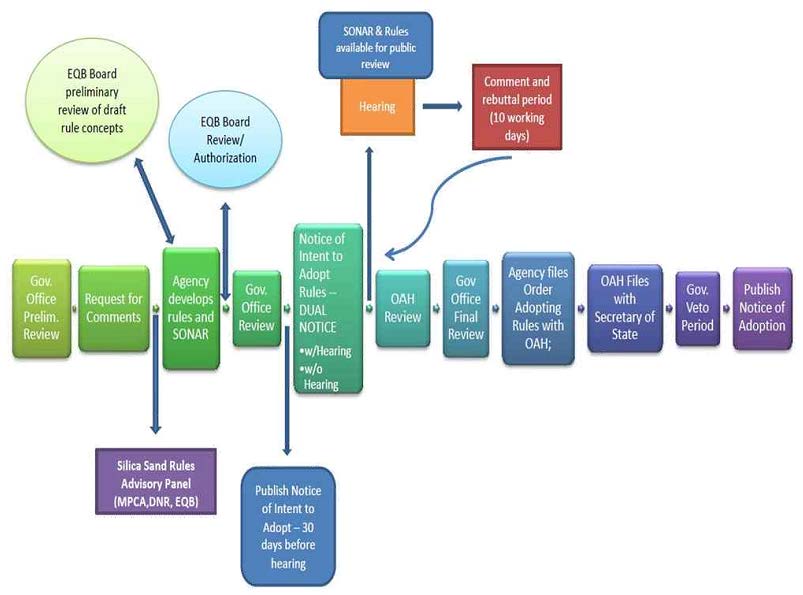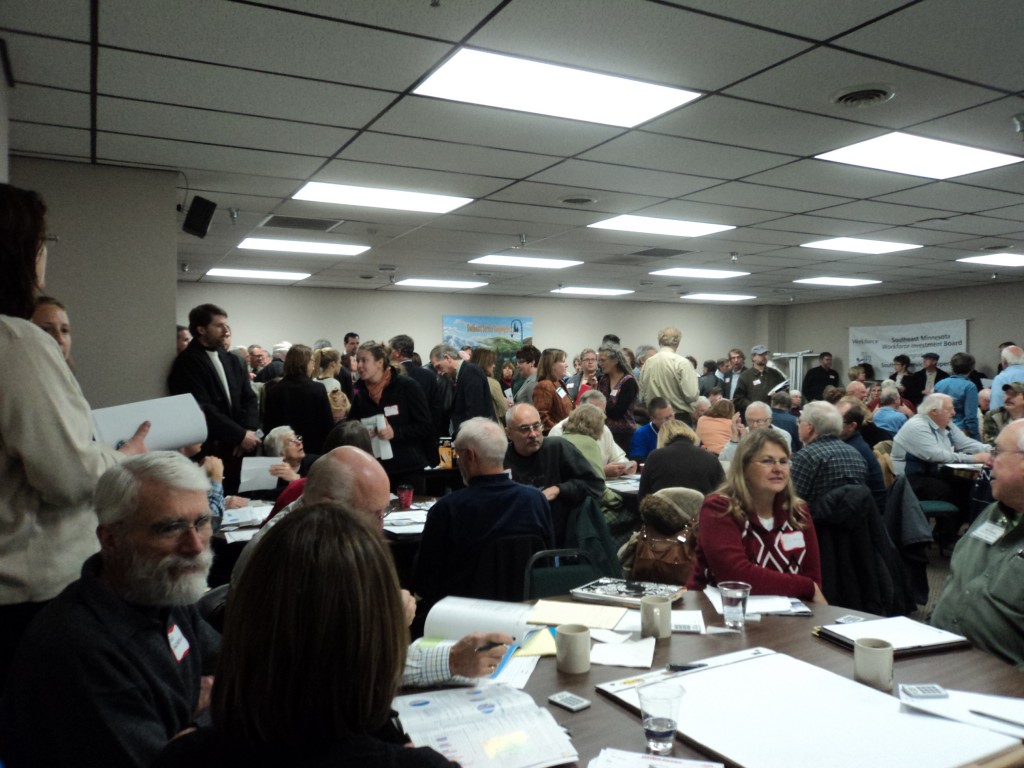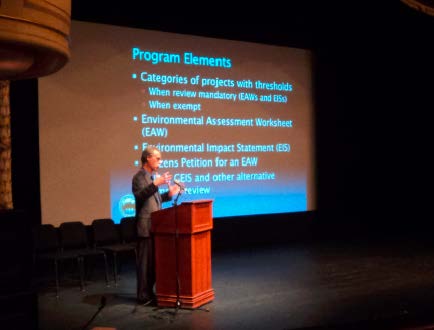TOMORROW – Silica Sand Tech Assistance Team Mtg.
January 4th, 2017
January 5, 2017 – 2:30pm
Silica Sand Technical Assistance Team Meeting
January 5th, 2017 @ 2:30pm in the DNR Central Office Lobby Conference Room.
Meet to discuss technical and agency updates to the EQB Tools to Assist Local Governments in Planning for and Regulating Silica Sand Projects, agency rulemaking updates, and updates on silica sand activities in the State of Minnesota
Conference call: 1-888-742-5095 | Conference Code: 3649223869#
Agenda:
1) Introductions
2) Agency updates on silica sand activities in the State of Minnesota
3) Technical and agency updates to EQB Tools to Assist Local Governments in Planning for and Regulating Silica Sand Projects
4) Agency updates on rulemaking
a. DNR
b. MPCA
c. EQB
5) EQB Ordinance Library
6) Other topics
7) Adjourn
Show up — keep the heat on to get these projects MOVING! It’s been YEARS!
The rulemaking process — nothing changes…
September 13th, 2015
Many thanks to the “little birdie” who brought this decades old report to my attention:
Yes, this is a report from the Minnesota Legislative Auditor from 1993, and if you read it, you’ll see little has changed is so many years… The issues raised are issues we’ve been raising in the Public Utilities Commission rulemaking for Minn. R. Ch. 7849 and 7850 (Certificate of Need and Siting/Routing). AAAAAAAAAAAACK!
For example, from the Summary:
For example, in the PUC Rulemaking for 7849 and 7850 (PUC Docket 12-1246), it’s been an over two-year-long process, and few are showing up anymore. We weigh in, some things are taken into account in the drafts, and then that disappears from the next draft. How can it feel like anything but a colossal waste of time? Yet if we weren’t there, the utilities would get everything they want. And as with the utility Certificate of Need and Siting/Routing processes, rulemaking has the same notice and public participation problems. It’s all the same, deja vu all over again.
… and also from the report …
Does this sound familiar?
So what is the bottom line of this report?
Also, we recommend the following additional changes to the Administrative Procedure Act:
… and …
In addition to changing the APA and other statutes that govern agency rulemaking, we recommend that:
Silica Sand Rulemaking — Mtg. Thursday 8/28
August 26th, 2014
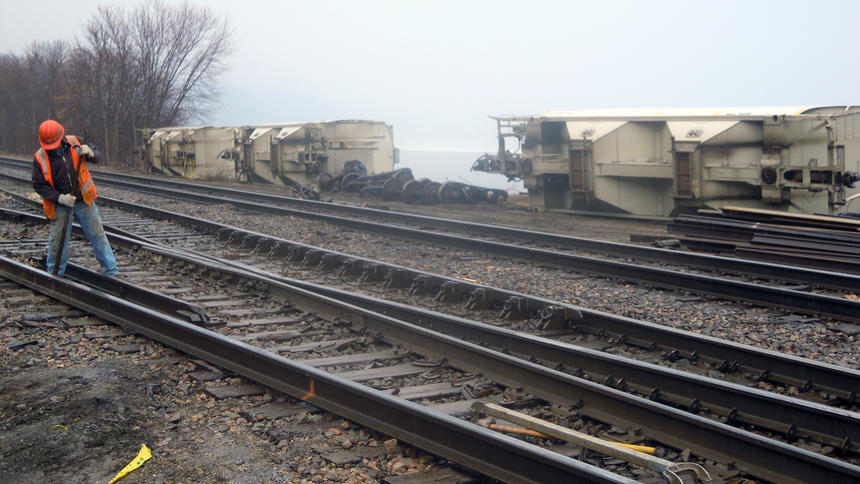 It’s that time again — the Silica Sand Advisory Committee is meeting again on Thursday, from 10 a.m. to 3:30 p.m. at the People’s Energy Cooperative in Oronoco, Minn.
It’s that time again — the Silica Sand Advisory Committee is meeting again on Thursday, from 10 a.m. to 3:30 p.m. at the People’s Energy Cooperative in Oronoco, Minn.
Here’s the Agenda:
Agenda
Dig this:
In my experience, the search/stretch for consensus is the first step in unreasonable compromise. It takes a push to change things, and it’s important not to give up too soon.
As you know, I’ve been frustrated at the way these meetings are handled, in that they’re NOT doing what a rulemaking advisory committee is supposed to do, which is review and comment on draft rules. And we’re not getting representation on this committee, there are no regular updates from members that I’m aware of, unless I ask on a list, so we’re not getting any opportunity for input or feedback from the representatives. Plus there’s Charlie Peterson…
I was listening to the July meeting, and for introductions, there were only six members of the committee present:
Tara Wetzel – MN Aggregate Ready Mix Assoc.
Beth Procter – Lime Twp., Blue Earth County
Al Frechette – Scott County
Doug Losee – Unimin
Tom Rowekamp – IT Sand
Kelly Stanage – Citizen Rep. from Houston County
I’ve heard from Amy Nelson that she, Keith, and Vincent Ready were there. Katie just let me know she was there. Others? Were introductions not broadcast? Did anyone come in later? Can’t tell, it was audio only (unless I’m missing something), and the audio was out for a large part of the presentation. Where are the alternates? Where are the alternates? And if members are determining that it’s a big waste of time and don’t want to show up, well, it seems they ought to let the agencies know so replacements can be found! And so the meetings can be changed to become more ___________ and less _________ so members can and will attend!
Here’s the bright spot of the day, from what I’ve seen:
Look where they put the “Advisory Panel.” IT’S IN THE RIGHT PLACE!!! YES!!! Now, there needs to be another arrow, though, or a expansion of the purple square that says, “Advisory Panel review of draft rules.” They’re sidestepping by saying that, even the EQB Board, will “review draft rule concepts.” NOPE, not good enough, eliminate that word “concepts” and let’s start reviewing rules, the Advisory Panel and the EQB. DRAFT RULES! It’s that simple.
From the site, here are the future planned meetings:
EQB “Streamlining” Comments Due!
January 14th, 2013
This “streamlining” of environmental review marches onward.
COMMENTS ARE DUE TOMORROW!
I’d guess that the Gov. got an earful of what the people thought of his idea to … well… to… see E.O. 11-32, with an apparent intent to gut, slice and dice – the people don’t like it one bit:
Meetings were held, comments were given, but the only thing presented to comment on, and about which comments were directed, was the “Environmental Report Card.” But there also was a report about “Improving Environmental Review” and “Environmental Coordination and Governance.” Not one word was said by the meeting facilitators about these two reports, reports that were “approved” by the EQB before these meetings were even held! Great, just great.
Here were a few of my comments at the time, which I’ll be sending in, in technicolor:
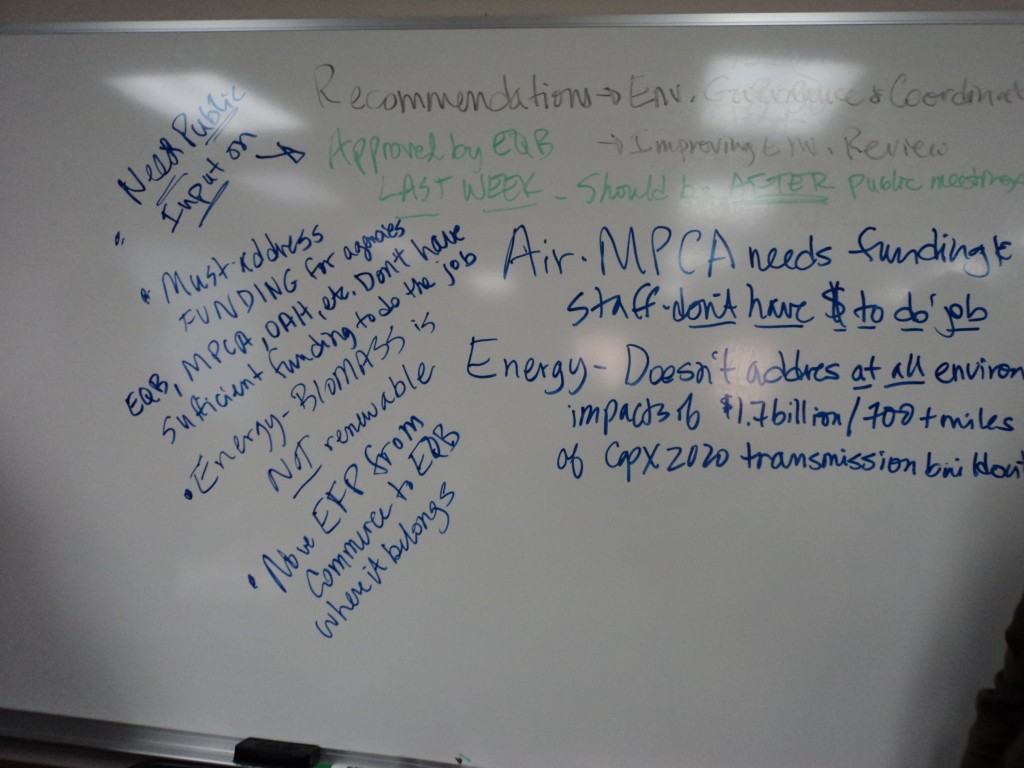
Links to the EQB Environmental Review documents:
- Evaluation and Recommendations for Improving Environmental Review
- Recommendations for Environmental Governance and Coordination
- Minnesota Environment and Energy Report Card
At the meeting, I’d asked when comments were due, and the response, after they all looked at each other, was “anytime before the Environmental Congress (sometime in March, still no date disclosed).
Now, I hear there’s a deadline of January 15. It’s not on the EQB calendar, and it’s buried on the “Environmental Congress” page. Here is that deadline and also a form to make online comments:
Click HERE for the EQB’s “Resource” page.
Note there’s a “Calendar” on the Resource Page, above Click on that CALENDAR and note that there is no mention of any deadline for comments.
Please read the two reports with something of substance (the report card is “fluff” at best):
- Evaluation and Recommendations for Improving Environmental Review
- Recommendations for Environmental Governance and Coordination
What’s most important about these is that they’ve backed off from some of the language of the draft reports, the “eliminate regulation” mantra is not so frenetic. The charge for these reports was:
1. Evaluate and make recommendations on how to improve environmental review
2. Evaluate and make recommendations for improved environmental governance and
coordination
This is the part I find disturbing — tell me, how does this relate to the charge:
The elements of the evaluation directed by EQB included:
- Look at the original intent of environmental review and consider if circumstances in Minnesota have changed such that a fundamental change in the original intent is needed.
It also claims that:
The intent of this draft report is to provide a transparent depiction of the process
that was used to develop recommendations and allow for broad public review of the
recommendations.
Where’s the “broad public review” of this report? There is NONE! It’s up to us, folks, to go over this and review it and comment on it, because so far, “broad public review” hasn’t been happening.
The part that is most disturbing to me is the way they’re trying to reframe “intent.” I don’t know where this came from, E.O. 11-32 says not one word about “intent” of environmental review — that’s a legislative mandate from decades ago. Who wrote this? Was it our good friend Charlie Peterson who wrote it, the one who facilitated these meetings, the one who facilitated the CapX 2020 Task Forces so abysmally, going far afield of the charge? Where does the writer of this report get any direction or authority to rewrite legislation, legislative history, and redefine the intent of environmental review?
Here’s what’s in the “final” report, p. 5-6, approved by the EQB on November 14, 2012:
What’s wrong with that? Take a closer look. The problem is the part about “consideration of both short and long term social and economic needs of the state.” Environmental review is to look at impacts, to provide information, and it is not about “consideration of both short and long term social and economic needs of the state.” Environmental review has never done a thorough cost/benefit analysis. Social and economic impacts are supposed to be addressed in environmental review, but “NEEDS” — let’s talk about what the social “needs” of the state are, and let’s talk about what the economic “needs” of the state are. Who decides what a social or economic “need” is, and what weight to give it? If this report is any indication, we’re in trouble. Look in Appendix D at the weights given to the groups, and you’ll see that in the identical categories, when asked to pick the most important issues, some groups get more votes than others. Whose opinion counts more? Look at their Appendix D to see.
Send in your comments on the studies, let them know you’re commenting on the studies and then tell them what you have to say, and note that something this important does indeed require a “broad public review.” At least, that’s this broad’s opinion!
Red Wing 2020 on frac sand
November 16th, 2012
Last night, “Red Wing 20/20” had a “Community Forum” about frac sand mining. Red Wing 20/20 is an entity formed by the Red Wing Port Authority, and from its Red Wing page:
“Promote economic growth.” That’s a phrase I don’t like because it usually means “promote economic growth” no matter what the impacts are.
The program was introduced by Pam Gorman, she’s the chair of Red Wing 20/20, and that gets my red flags up given she’s Xcel Energy,. Mayor Dennis Eagan played a part as well, members of Red Wing 20/20 are appointed by the Mayor, and he’s a lobbyist for some pretty nefarious entitites (google “Altria”). Oh my!
Presenters:
Frac Sand Operations in Minnesota—History and Outlook—Heather Arends, DNR Applicable State Regulations—Environmental Permits—Wendi Turri, MPCA Transport Issues—Dave Christianson, MnDOT Frac Sand Operations: Public Health Concerns—Silica Toxicity—Hillary Carpenter, MDH Other Tools for Addressing New Operations—Environmental Review—Bob Patton, EQB
I had a flyer to pass, because I want those concerned with frac sand issues to weigh in on the gutting of the EQB, started by Pawlenty and gang, and which Gov. Dayton joined with his E.O. 11-32. There was an EQB meeting recently about this, with a frac sand agenda item afterwards, and the frac sand people who were there just sat there, didn’t say a peep, as the EQB heard public comments on their plans! Come on, folks, this affects you and your project! Show up before it’s too late!
Here’s my flyer, urging people to attend the public meetings and Environmental Congress, to contact Gov. Dayton (click here!), and to contact legislators.
We missed the introduction, Heather Arends, DNR, and Wendi Turri from MPCA.
It was weird, mostly because the guy from the DOT, Dave Christianson, who was speaking when we got there, he was to talk about “Transport Issues” instead was in promotional mode, and even said that sand isn’t a health problem. WHAT??? That went far beyond his area. But he also said that he’s a friend of a guy who has a frac sand mine on his land in Wisconsin… hmmmmm…
Hillary Carpenter, from the Dept. of Health, was excellent, clearly knew what he was talking about, openly noting that this was something there wasn’t a lot of information about, but that it IS a health hazard.
Bob Patton, EQB. explained Environmental Review, pretty realistically, the purpose, scope and limits and also about Generic EIS and how that works (Other Tools for Addressing New Operations??? EH? Should have been in the “Applicable State Regulations” part. It’s not separate, and it’s applicable regulation.) Patton brought up the Environmental Congress as something people should participate in. YEAAAA! The EQB once was a working entity, but now it’s been gutted so severely, with duties shuffled elsewhere, worst case was power plant siting going over to Commerce, what does Commerce have to do with environmental review for transmission? So that helped lend some oomph to my flyers, which the organizers didn’t want me to pass out during the program, said I had to wait until they called a break because they were running behind, I declined, “I’m not going to be delaying anything!” and passed them out during speaker changes. I know, it’s such revolutionary stuff, info about the Environmental Congress and the meeting schedule.
With the Governor’s push to redefine the intent of environmental review, and with the budget cuts that have neutered agencies, I’m not feeling hopeful that frac sand will get the vetting it needs.
Now’s the time to weigh in on the importance of ROBUST and THOROUGH environmental review! Public Meetings soon:
November 27 – Rochester, Wood Lake Meeting Center 9:30am – 12:00pm
November 27 – Bloomington, Normandale Community College 6:30pm – 9:00pm
November 28 – Duluth, Lake Superior College 5:30pm – 8:00pm
December 10 – Worthington, Worthington High School 3:30pm – 6:00pm
December 12 – St. Cloud, Stearns County Service Center 5:30pm – 8:00pm
December 14 – Moorhead, Minnesota State University 3:00pm – 5:30pm
More on the Environmental Congress page.





